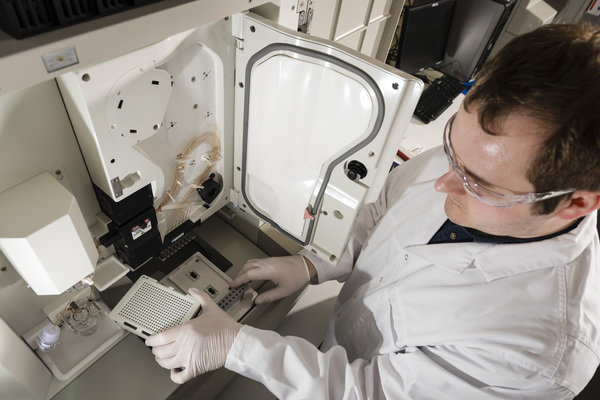
Human Blood Plasma Glycomics
Motivation
Glycosylation is one of the most common, most complex and most important posttranslational modifications. A large proportion of the proteome in eukaryotic systems is glycosylated. This highly diverse modification is involved in many cellular functions, including modulation and mediation of signaling events, cell-cell and cell-matrix interaction and extracellular, as well as intracellular traffic. Glycosylation provides a variety of functions, like the control of correct protein folding, the regulation of the immune response and the modulation of physical, chemical and biological properties of proteins within the blood circulation. Also many diseases like diabetes, cancer, rheumatoid arthritis, cardiovascular diseases, Alzheimer's disease and Creutzfeld-Jakob disease are associated with changes in the glycosylation of proteins. To further increase knowledge and understanding in glycobiology the comprehensive investigation of the entire complement of sugars (glycome), large-scale clinical- and population-based studies, focused on biomarker discovery are needed. Such systematic glycomics studies can be viewed as a continuation of the genomic and proteomic era. In contrast to genome or even proteome analysis, glycome analysis is by far more challenging, due to the highly diverse nature of glycosylation.

Aim of the project
The realization of large-scale clinical- and population-based studies requires high throughput (HT), high resolution and highly sensitive but robust methods, like multiplexed capillary gelelectrophoresis with laser induced fluorescence detection (xCGE-LIF). Regarding high throughput, the complete sample preparation procedure is now established on 96-well-plate format, with a hands-on time of less than 2.5 h. This optimized sample preparation, combined with a fast xCGE-LIF based separation, a fully automated data analysis, and an in-house N-glycan database enables highly reproducible "real" HT analysis of protein N-glycosylation, including structural elucidation of N-glycans in complex mixtures.
In cooperation with Prof. Wuhrer at the Leiden University Medical Center (LUMC), the developed HT system is used for the glycoanalysis of human plasma N-glycome of clinical samples [1,2] with focus on biomarker discovery
